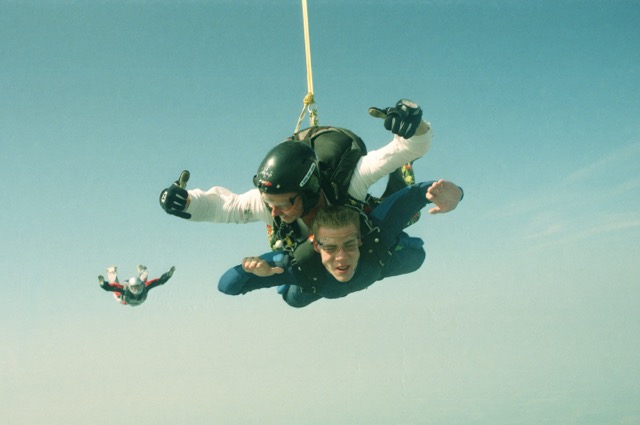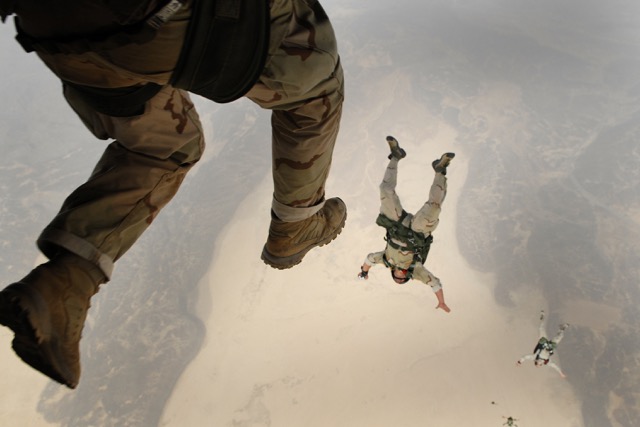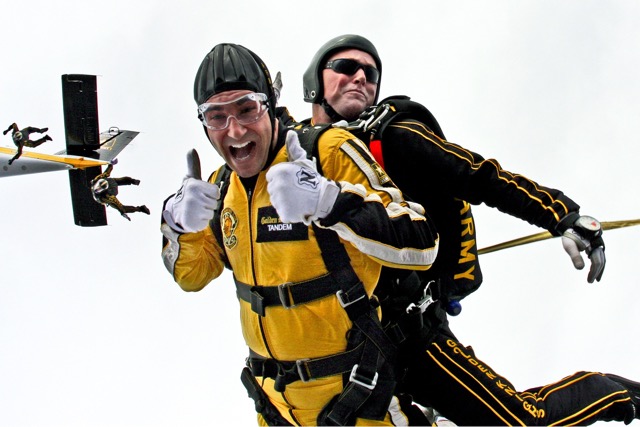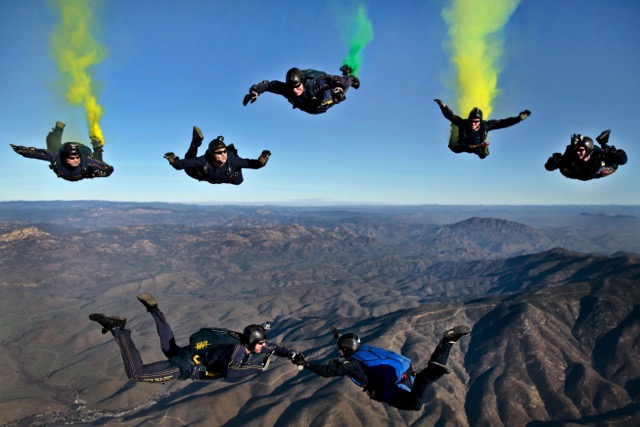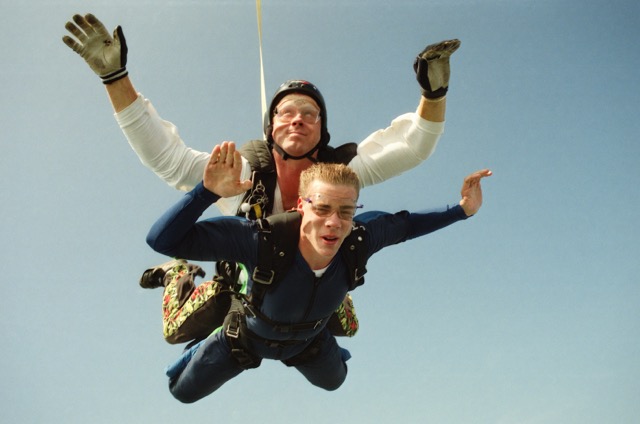If you’re someone who thrives on adrenaline and loves to push the boundaries of adventure, you may have wondered whether skydiving in the winter is a possibility. Well, we’re here to answer that burning question and provide you with all the information you need to know about skydiving during the colder months. From whether it’s okay to skydive in winter to the conditions that might put a halt to your jumping plans, we’ve got you covered. So, gear up and read on as we dive into the thrilling world of winter skydiving!
Introduction
When it comes to skydiving, one common question that people often ask is whether it is possible to go skydiving in the winter. While skydiving is predominantly seen as a summer activity, it is indeed possible to take the plunge in the colder months as well. However, there are certain factors to consider before donning your parachute and leaping out of a plane during the winter season.
Firstly, it is important to note that skydiving in winter requires extra preparation and attention to safety. The cold temperatures can significantly impact both the equipment and the skydiver’s body. Extreme cold can cause certain parts of the parachute, such as the lines and fabric, to become more brittle and prone to damage. Therefore, it is crucial to ensure that all the gear is thoroughly inspected and appropriate measures are taken to minimize the risks associated with the cold weather.
Additionally, the cold temperatures in winter can also affect the human body. Exposing yourself to freezing temperatures for an extended period can lead to discomfort and potentially even hypothermia. It is essential to dress appropriately in layers to keep warm during the jump. Wearing thermal clothing, gloves, and a suitable head covering can help maintain body heat and protect against the chilling winds experienced during the descent.
Is It Ok to Skydive in Winter?
Winter can be a magical time of year, with snow-covered landscapes and a crisp chill in the air. But what about skydiving? Is it safe and enjoyable to take the plunge during the winter months? Many people may wonder if it’s okay to skydive in winter, considering the colder temperatures and potential weather hazards. Let’s delve into the details and find out if winter skydiving is a thrilling adventure or an activity best saved for warmer days.
First and foremost, it’s important to note that skydiving in winter is indeed possible. However, there are certain factors to consider before taking the leap. One of the main concerns during winter skydiving is the temperature. With chilly winds and freezing conditions, it’s crucial to dress appropriately and ensure your safety. Wearing layers, including a thermal base layer, a warm jacket, and gloves, can help to combat the cold and keep you comfortable during the jump.
Aside from the temperature, another consideration when deciding if it’s okay to skydive in winter is the weather conditions. Strong winds, snowstorms, and low visibility can pose serious risks and make skydiving unsafe. It’s essential to check the weather forecast beforehand and communicate with experienced skydiving professionals who will be able to advise whether the conditions are suitable for a jump. Safety should always be the top priority, so never hesitate to postpone the dive if the weather is unfavorable.
- Another factor to consider is the impact of cold weather on the equipment. Cold temperatures can affect the functionality of certain skydiving gear, particularly parachute materials. The elasticity of the fabric may decrease, which can impact the performance of the parachute and potentially lead to a less controlled descent. It’s crucial to ensure that the equipment is properly maintained and inspected before each winter skydiving session, reducing the risks associated with cold weather.
- Despite the potential challenges and risks, skydiving in winter can be an incredibly exhilarating experience. The stunning winter landscapes, snow-covered fields, and the breathtaking thrill of freefall all combine to create a unique adventure that you won’t get during any other season. Just make sure to take the necessary precautions, dress appropriately, check the weather conditions, and ensure that the equipment is in optimal condition.
| Pros of Winter Skydiving | Cons of Winter Skydiving |
|---|---|
| 1. Unique Scenery: Winter offers a magical backdrop with snow-covered landscapes, providing a picturesque experience. | 1. Challenging Weather: Winter often brings strong winds, unpredictable weather conditions, and potential hazards. |
| 2. Fewer Crowds: Skydiving in winter typically results in fewer crowds, allowing for a more personalized and intimate experience. | 2. Equipment Challenges: Cold temperatures can impact the functionality of certain gear, necessitating extra care and maintenance. |
| 3. Adrenaline Rush: The exhilaration of freefalling through the cold air adds an extra thrill to the skydiving experience. | 3. Safety Concerns: Wind gusts, icy conditions, and limited visibility can all pose safety risks during winter skydiving. |
Is It Ever Too Cold to Skydive?
Skydiving is an exhilarating adventure that attracts thrill-seekers from all walks of life. As the winter months approach, it’s natural to wonder if there’s a point when it becomes too cold to enjoy this adrenaline-pumping activity. The answer to this question is not a simple one, as various factors come into play when determining whether it’s safe and comfortable to skydive in cold weather.
First and foremost, the temperature at ground level is not necessarily indicative of the conditions you’ll encounter at high altitudes during a skydive. As you ascend, the air temperature drops by approximately 2 degrees Celsius for every 1,000 feet. This means that even on a mild winter day, the upper atmosphere could be significantly colder, posing potential risks to skydivers.
Secondly, wind chill plays a significant role in how cold it feels during a skydive. High altitudes coupled with wind speed can create a chilling effect on the body, making the temperature feel even colder than it actually is. It’s essential to consider both the air temperature and wind speed when determining if it’s too cold to skydive.
- Extreme Cold Conditions: Generally, when the air temperature at ground level falls below freezing point (0 degrees Celsius or 32 degrees Fahrenheit), it’s advisable to postpone your skydiving plans. The drop in temperature at high altitudes can make the experience extremely uncomfortable, increasing the risk of frostbite and other cold-related injuries.
- Wind Speed Considerations: Wind speed is a crucial factor to evaluate alongside temperature. Even if the air temperature is marginally above freezing, strong winds can intensify the cold and create hazardous conditions during a skydive. Wind speeds exceeding 20 knots are often considered unsafe for skydiving, especially in combination with low temperatures.
Ultimately, assessing whether it’s too cold to skydive depends on a combination of factors including air temperature, wind speed, and personal comfort levels. Safety should always be the top priority, so it’s essential to consult with experienced skydiving professionals who will evaluate the conditions and provide guidance accordingly.
| Factors to Consider | Key Points |
|---|---|
| Air Temperature | Ground level temperature doesn’t reflect the conditions at high altitudes. |
| Wind Chill | Wind speeds at higher altitudes can make the temperature feel much colder. |
| Extreme Cold Conditions | Air temperature below freezing point increases the risk of cold-related injuries. |
| Wind Speed Considerations | Strong winds can intensify the cold and create hazardous conditions. |
What Conditions Can You Not Skydive In?
Skydiving is an exhilarating and adventurous activity enjoyed by many thrill-seekers around the world. It provides a unique experience of soaring through the sky and feeling a rush of adrenaline unlike any other. However, it’s important to note that skydiving should be done under safe and favorable conditions to ensure the utmost safety of all participants. So, what conditions can you not skydive in, and why?
Safety is of paramount importance in skydiving, and certain weather conditions can pose significant risks. One condition that prohibits skydiving is strong winds. Winds exceeding a certain speed can affect the stability and control of the parachute, making it difficult to navigate and land safely. Additionally, gusty winds can cause unexpected turbulence during the jump, which can be dangerous for both the skydiver and the parachute.
Another condition that restricts skydiving is low visibility. When the visibility is poor due to fog, heavy rain, or thick clouds, it becomes challenging for skydivers to accurately gauge their altitude and judge their landing spot. Skydiving requires a clear line of sight to ensure precise navigation and a safe landing. Hence, low visibility conditions are not suitable for skydiving activities.
- Extreme cold temperatures are also a factor that can limit skydiving. Frigid temperatures can have a significant impact on the equipment and safety gear used in skydiving, such as frozen parachutes and stiffened harnesses. Moreover, extreme cold can adversely affect the body, leading to decreased dexterity and increased risk of frostbite or hypothermia. Therefore, skydiving in extremely cold conditions is not recommended.
Furthermore, stormy or inclement weather conditions must be avoided when planning a skydiving adventure. Thunderstorms, heavy rains, hail, or any other form of severe weather can create hazardous conditions for skydivers. These conditions can lead to unpredictable air currents, lightning strikes, and increased turbulence, making it unsafe to jump. In such situations, it is crucial to prioritize safety and postpone the skydiving experience until the weather improves.
In conclusion, skydiving is an incredible and adrenaline-pumping activity, but it should be performed in suitable weather conditions to ensure the safety of all individuals involved. Avoid skydiving in strong winds, low visibility, extreme cold temperatures, and during stormy or inclement weather. By adhering to these guidelines, skydivers can enhance their safety and enjoyment, making their experience all the more memorable.

